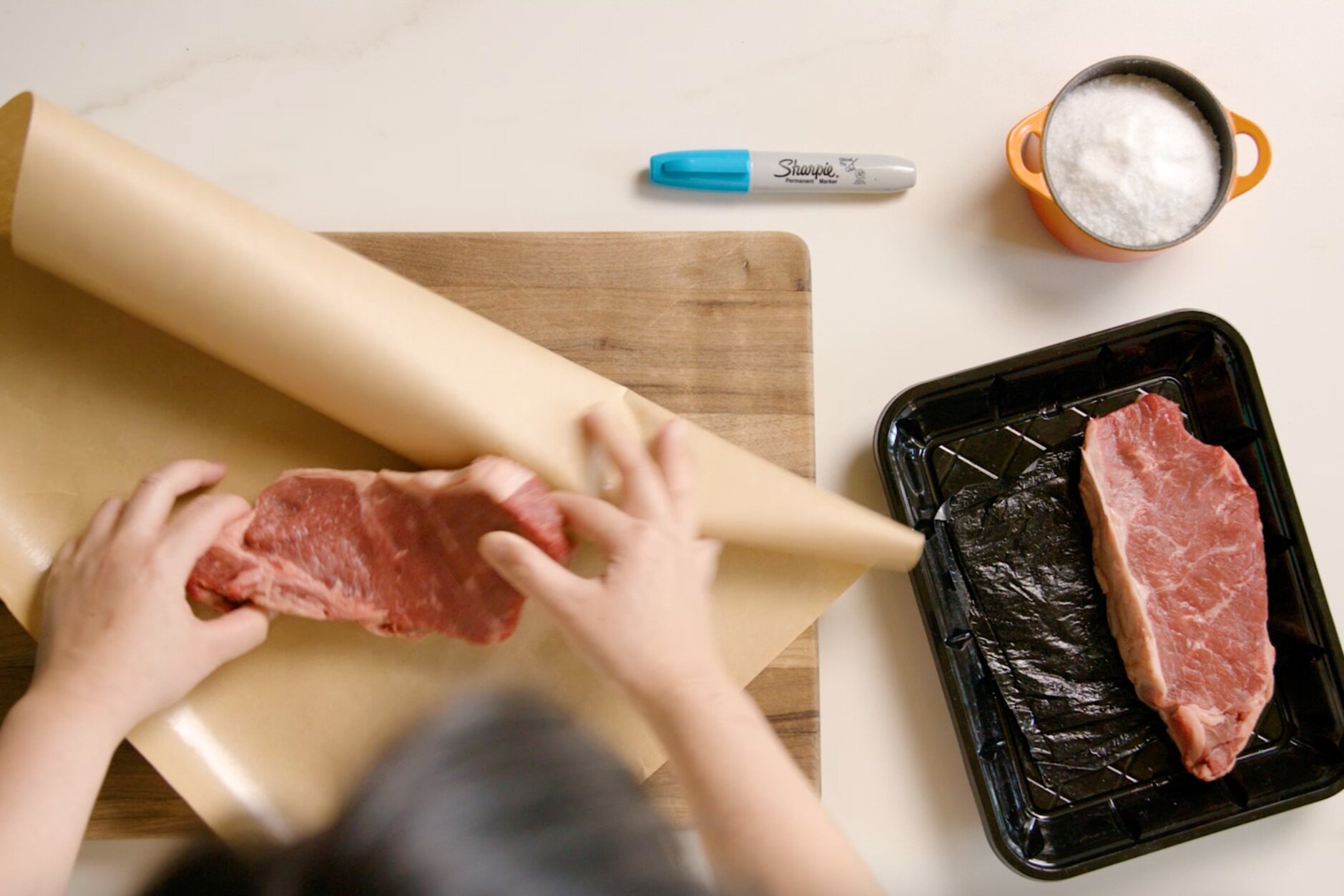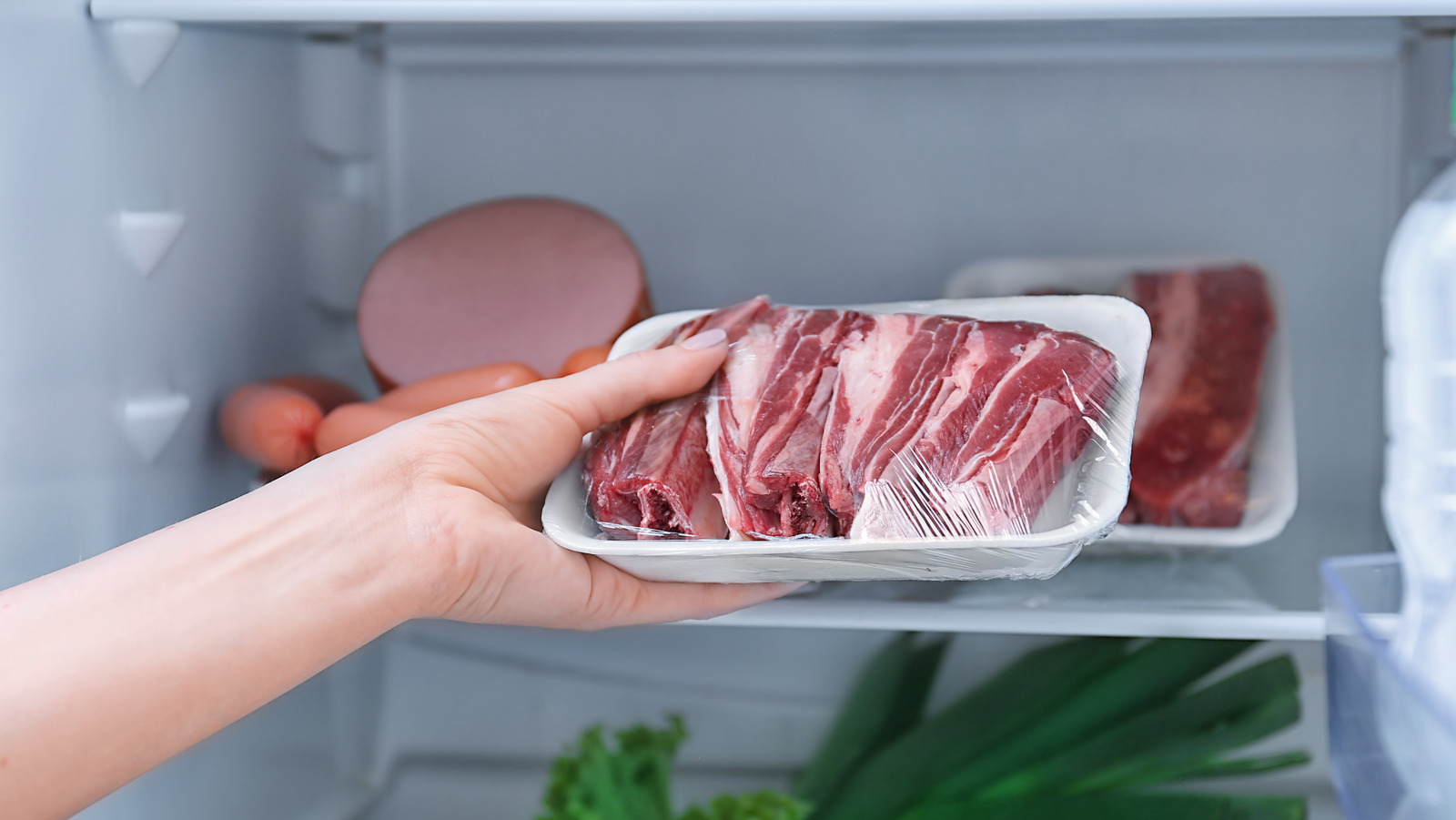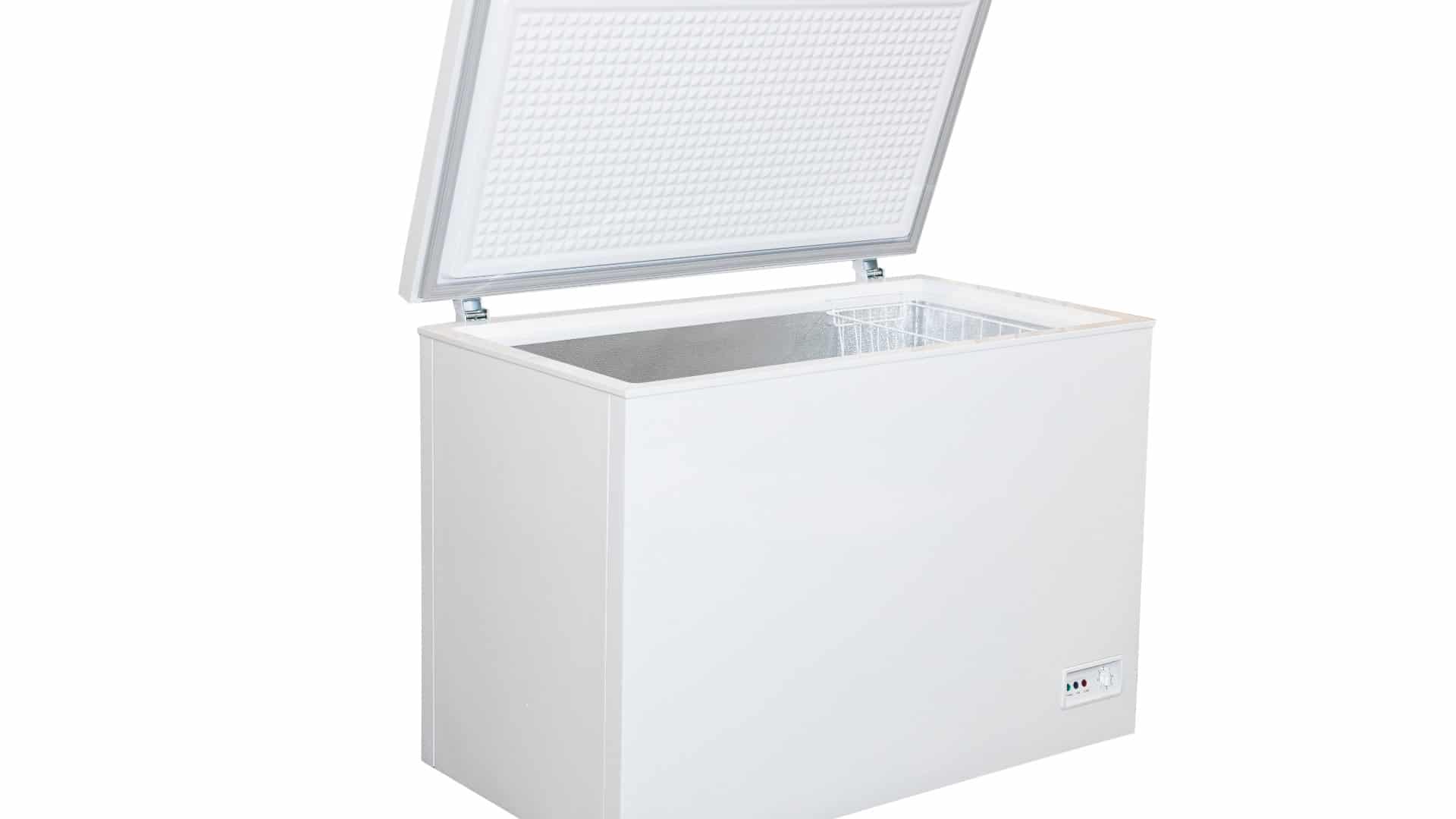

Articles
How Long Can Meat Stay In Deep Freezer
Modified: January 8, 2024
Discover how long meat can stay in a deep freezer and ways to preserve your articles for extended periods. Get expert tips and advice now!
(Many of the links in this article redirect to a specific reviewed product. Your purchase of these products through affiliate links helps to generate commission for Storables.com, at no extra cost. Learn more)
Introduction
When it comes to preserving meat, the deep freezer is a game-changer. Whether you’re stocking up during a sale or storing leftovers from a big feast, a deep freezer can extend the shelf life of meat and keep it safe for consumption for an extended period of time. But how long can meat really stay in a deep freezer? In this article, we will explore the factors that affect the storage duration of meat in a deep freezer, different types of meat and their freezing durations, as well as provide tips for properly freezing meat to maximize its shelf life.
Meat storage in a deep freezer is influenced by various factors such as the temperature of the freezer, the type of meat, the packaging used, and the overall quality of the meat prior to freezing. Freezers typically operate at temperatures below 0°F (-18°C), which inhibits the growth of bacteria and other microorganisms that can cause spoilage and foodborne illnesses.
However, it is important to note that while freezing can significantly slow down the deterioration of meat, it does not completely halt the process. The quality and freshness of the meat at the time of freezing will ultimately determine its shelf life in the freezer.
Next, we will delve into different types of meat and their freezing durations. While the freezing times may vary slightly between different cuts and preparations, the guidelines provided will give you a general idea of how long each type of meat can stay in the deep freezer.
Key Takeaways:
- Properly storing meat in a deep freezer involves maintaining a consistent temperature, using airtight packaging, and following recommended storage durations to maximize the longevity of frozen meat and minimize the risk of spoilage.
- Understanding the specific freezing durations for different types of meat, recognizing signs of spoilage, and following safe thawing methods are essential for confidently storing and utilizing frozen meat while ensuring delicious and safe meals for you and your family.
Read more: How Long Can Cake Stay In The Freezer
Factors Affecting Meat Storage in Deep Freezer
Several factors can impact the storage duration of meat in a deep freezer. By understanding these factors, you can optimize the preservation of your meat and ensure its quality when thawed and consumed. Let’s take a closer look at these factors:
- Freezer Temperature: The temperature of the deep freezer is crucial for maintaining the quality and safety of the meat. It is recommended to set the freezer temperature at or below 0°F (-18°C). This low temperature inhibits the growth of bacteria and slows down the process of spoilage. Keep in mind that it is important to regularly check your freezer’s temperature to ensure it is operating within the desired range.
- Quality of Meat: The quality of meat at the time of freezing plays a significant role in determining its storage duration. It is advisable to freeze meat when it is at its freshest and of the highest quality. If the meat is already starting to spoil or is past its expiration date, freezing it may not prolong its shelf life significantly.
- Proper Packaging: The packaging used for meat in the deep freezer is crucial in preventing freezer burn and maintaining the meat’s quality. It is recommended to use airtight containers, freezer bags, or vacuum-sealed packaging to minimize exposure to air and moisture. This helps to preserve the flavor, texture, and nutritional value of the meat.
- Storage Time: The duration for which meat can stay in the deep freezer also depends on how long it has already been frozen. The longer meat stays frozen, the more it may experience flavor and texture changes. While meat can be stored in the freezer for long periods of time, it is generally recommended to consume it within a year for optimal quality.
- Freezer Organization: How the meat is stored in the freezer can impact its longevity. Ensure that the meat is properly labeled and organized, with older items placed in front for easier access. This will help you rotate your frozen stock and consume the oldest items first.
By taking these factors into consideration, you can significantly extend the storage duration of meat in your deep freezer and enjoy high-quality meat for months to come. In the next section, we will explore the freezing durations for different types of meat.
Different Types of Meat and Their Freezing Durations
The freezing duration for meat can vary depending on the type of meat and its specific cut. It is important to know the recommended freezing times to ensure that the meat retains its flavor, texture, and overall quality. Here are the freezing durations for different types of meat:
Beef:
– Ground beef: Can be stored for 3-4 months in the freezer.
– Steaks and roasts: Can be stored for 6-12 months in the freezer.
– Stew meat: Can be stored for up to 3-4 months in the freezer.
– Ground beef patties: Can be stored for 3-4 months in the freezer.
Pork:
– Pork chops: Can be stored for 4-6 months in the freezer.
– Pork roasts: Can be stored for 4-6 months in the freezer.
– Bacon: Can be stored for 1-2 months in the freezer.
– Sausages: Can be stored for 1-2 months in the freezer.
Chicken:
– Whole chicken: Can be stored for 9-12 months in the freezer.
– Chicken pieces (breasts, thighs, drumsticks): Can be stored for 6-9 months in the freezer.
– Ground chicken: Can be stored for 3-4 months in the freezer.
– Chicken wings: Can be stored for 6-9 months in the freezer.
Fish:
– Lean fish (such as cod, sole, and haddock): Can be stored for 6-8 months in the freezer.
– Fatty fish (such as salmon and mackerel): Can be stored for 2-3 months in the freezer.
– Shellfish (such as shrimp and scallops): Can be stored for 3-6 months in the freezer.
Lamb and veal:
– Lamb and veal chops: Can be stored for 6-9 months in the freezer.
– Lamb and veal roasts: Can be stored for 6-9 months in the freezer.
Game meat:
– Deer venison: Can be stored for 6-9 months in the freezer.
– Wild boar: Can be stored for 6-9 months in the freezer.
– Rabbit: Can be stored for 6-9 months in the freezer.
It is important to note that these are general freezing durations and may vary depending on the specific conditions and quality of the meat. Ensure that you follow proper packaging techniques and label your meat with the date of freezing to keep track of its storage duration.
Now that you know the freezing durations for different types of meat, let’s move on to some tips for properly freezing meat to maximize its shelf life.
Read more: How Long Can A Projector Stay On
Tips for Properly Freezing Meat
Properly freezing meat is essential for maintaining its quality and maximizing its shelf life. By following these tips, you can ensure that your meat stays fresh and delicious, even after an extended period in the deep freezer:
- Freeze meat at its freshest: For optimal results, freeze meat when it is at its freshest. This ensures that the meat retains its flavor and nutrients during the freezing process.
- Portion meat before freezing: Consider dividing larger cuts of meat into smaller portions before freezing. This makes it easier to thaw and use only what you need, preventing any unnecessary wastage.
- Use airtight packaging: Choose proper packaging that is airtight to prevent freezer burn and maintain the quality of the meat. Vacuum-sealed bags, freezer-safe containers, or heavy-duty freezer bags are all good options. Make sure to remove as much air as possible before sealing.
- Label and date the packaging: Always label your meat with the type, cut, and date of freezing. This helps you keep track of the storage duration and makes it easier to identify the meat when you need it.
- Remove any excess moisture: Pat the meat dry with paper towels before packaging it for freezing. Excess moisture can lead to ice crystals and affect the texture and quality of the meat.
- Utilize the flash freezing method: For small pieces of meat, try flash freezing them individually on a baking sheet before transferring them to airtight packaging. Flash freezing helps prevent the pieces from sticking together, making it easier to portion out when needed.
- Arrange meat properly in the freezer: Organize your meat in a way that allows for proper airflow in the freezer. Avoid overpacking and leave some space between items for the cold air to circulate freely.
- Maintain a constant freezer temperature: Ensure that your freezer maintains a temperature of 0°F (-18°C) or below. Fluctuations in temperature can negatively impact the quality and safety of the frozen meat.
- Keep a freezer inventory: Create a freezer inventory to keep track of the types of meat you have and their expiration dates. This helps you plan meals and prevents any meat from being forgotten and left unused.
- Follow recommended storage durations: Although meat can be stored in the freezer for longer periods, it is generally recommended to consume it within the advised storage durations to maintain optimal flavor and quality.
By following these tips, you can ensure that your frozen meat stays fresh and tasty for an extended period of time. However, it’s important to know the signs of spoilage to ensure the meat is still safe to eat. In the next section, we will discuss the signs of meat spoilage and what to look out for.
Signs of Meat Spoilage
Keeping an eye out for any signs of spoilage is crucial to ensure that the meat you have stored in the deep freezer is still safe to consume. Here are some common signs of meat spoilage to watch out for:
- Off Odor: If the meat emits a sour, foul, or rancid smell, it could be an indication of spoilage. Fresh meat should have a mild, pleasant odor, so any unusual or pungent smells should raise concerns.
- Discoloration: Meat that has undergone significant color changes is likely spoiled. Look for noticeable changes in color, such as a grayish or greenish tint. Fresh meat should appear vibrant and red or pink.
- Texture Changes: Spoiled meat may feel slimy, sticky, or excessively dry to the touch. If the meat has a mushy or slimy texture, it is best to discard it.
- Mold: The presence of mold on the meat is a clear sign of spoilage. If you notice any fuzzy patches, green spots, or unusual growth on the surface, it is best to discard the meat.
- Excessive Freezer Burn: Freezer burn occurs when the meat is exposed to air, causing it to become dehydrated and develop grayish or whitish patches. While freezer burn doesn’t necessarily render the meat unsafe to eat, it can negatively affect its flavor and texture.
- Slimy Film or Excessive Ice Crystals: If you notice a slimy film or excessive ice crystals on the surface of the meat, it may be an indication of poor packaging or improper storage. This can lead to a deterioration of the meat’s quality and taste.
If you detect any of these signs of spoilage in your frozen meat, it is best to err on the side of caution and discard it. It’s always better to prioritize food safety and avoid consuming possibly contaminated meat.
Now that you know how to identify the signs of meat spoilage, let’s explore safe thawing methods for frozen meat to ensure that it retains its quality during the thawing process.
Safe Thawing Methods for Frozen Meat
Thawing frozen meat properly is essential to maintain its quality and ensure food safety. Improper thawing can lead to the growth of harmful bacteria and increase the risk of foodborne illnesses. Here are some safe thawing methods for frozen meat:
- Refrigerator Thawing: The safest and recommended method for thawing meat is in the refrigerator. Simply place the frozen meat on a plate or in a shallow dish on the bottom shelf of the refrigerator. This allows for a gradual thawing process, ensuring that the meat stays at a safe temperature. However, this method requires patience, as it can take several hours to a few days depending on the size and thickness of the meat.
- Cold Water Thawing: If you need to thaw meat quickly, you can use the cold water thawing method. Ensure that the meat is securely sealed in a leak-proof package, and submerge it in a bowl or sink filled with cold water. Change the water every 30 minutes to maintain its cold temperature. This method can thaw smaller cuts of meat within a couple of hours, but it requires constant monitoring to prevent the water temperature from reaching the danger zone (above 40°F/4°C).
- Microwave Thawing: The microwave can be used to defrost small cuts of meat if you’re short on time. However, it is important to follow the microwave’s instructions for defrosting meat and use the appropriate settings. Be cautious and monitor the meat closely, as microwaves can partially cook the edges of the meat during the thawing process. Once thawed, cook the meat immediately to ensure complete safety.
- Cooking from Frozen: In some cases, you can safely cook frozen meat without thawing it first. This method is suitable for thin cuts of meat or ground meat. You may need to increase the cooking time slightly to ensure thorough cooking. However, for larger cuts of meat, it is generally recommended to thaw them first for even cooking.
It is important to note that thawed meat should never be refrozen unless it has been thoroughly cooked. Once the meat has reached a safe internal temperature, it can be stored in the refrigerator for a short period or consumed immediately.
By using these safe thawing methods, you can effectively thaw frozen meat while minimizing the risk of bacterial growth and ensuring that the meat retains its quality. Now, let’s move on to discuss how to store meat in the freezer to maximize its shelf life.
How to Store Meat in the Freezer to Maximize Shelf Life
Properly storing meat in the freezer is key to extending its shelf life and preserving its quality. By following these guidelines, you can ensure that your meat stays fresh and safe for consumption for as long as possible:
- Wrap it properly: To prevent freezer burn and maintain the quality of the meat, wrap it tightly in plastic wrap or aluminum foil. For an extra layer of protection, place the wrapped meat in a freezer bag or use vacuum-sealed packaging.
- Label the packaging: Always label the packaging with the type of meat, cut, and date of freezing. This helps you keep track of the meat’s storage duration and makes it easier to identify when needed.
- Organize the freezer: Properly organize your freezer to allow for easy access to different cuts and types of meat. Keep similar items together, such as poultry in one section and beef in another. This will help you quickly find what you need and minimize the time the freezer door is open.
- Utilize proper containers: Use airtight containers or freezer bags that are specifically designed for freezing to prevent air and moisture from reaching the meat. This keeps the meat fresh and prevents freezer burn.
- Keep an inventory: Maintain a freezer inventory to keep track of the types of meat you have and their expiration dates. This ensures that you use the oldest items first and helps you plan meals more efficiently.
- Do not overcrowd the freezer: Avoid overpacking the freezer, as it restricts airflow and can cause uneven cooling. Leave some space around the meat to allow for proper air circulation, resulting in more consistent temperatures.
- Store meat in the coldest part: Place the meat in the coldest part of the freezer, usually the back or bottom shelf. This area maintains a more consistent temperature, reducing the risk of temperature fluctuations that can affect the meat’s quality.
- Practice FIFO (First In, First Out): When adding new meat to the freezer, make sure the older items are in front and accessible. This way, you will be more likely to use the oldest meat first and avoid any items getting forgotten and left unused for extended periods.
- Regularly check the freezer temperature: Keep an eye on the temperature of your freezer using a thermometer. The ideal temperature for a deep freezer is 0°F (-18°C) or below. Regularly monitoring the temperature ensures that the meat stays frozen at the optimal temperature for long-term storage.
By following these guidelines, you can maximize the shelf life and quality of the meat stored in your freezer. Remember to thaw and cook the meat properly to ensure safe consumption. Now, let’s address some frequently asked questions about freezing meat.
Read more: How Long Can A Mattress Stay In A Box
Frequently Asked Questions (FAQs) on Freezing Meat
Q: Can you freeze meat that has already been cooked?
A: Yes, you can freeze cooked meat. However, it is important to cool it down quickly before packaging it for freezing. Divide the cooked meat into smaller portions and allow it to cool in the refrigerator for a couple of hours before transferring it to the freezer.
Q: Can you refreeze meat that has been thawed?
A: It is generally not recommended to refreeze meat that has been thawed. When meat is thawed, the process of freezing and thawing can affect its quality and texture. Refreezing can further degrade the meat’s quality and increase the risk of bacterial growth. It is best to plan your portions and only thaw the amount of meat you need to minimize any waste.
Q: Is it safe to freeze meat that has reached its expiration date?
A: Freezing meat that has reached its expiration date is not recommended. Freezing will not reverse the spoilage process that has already begun. It is best to freeze meat when it is still within its recommended freshness period to ensure the best quality and safety.
Q: How long can I store ground meat in the freezer?
A: Ground meat can be stored in the freezer for approximately 3-4 months. Properly packaging and labeling the meat will help you keep track of its storage duration.
Q: Can you freeze meat in its original packaging?
A: While it is possible to freeze meat in its original packaging, it is generally recommended to transfer it to airtight containers, freezer bags, or vacuum-sealed packaging. The original packaging is often not designed for long-term freezing, and using freezer-specific packaging can better protect the meat from freezer burn and maintain its quality.
Q: Can I freeze meat that has been marinated?
A: Yes, you can freeze meat that has been marinated. Marinating the meat before freezing can even enhance its flavor. Ensure that the meat is well-coated with the marinade and place it in an airtight container or freezer bag. The marinade may slightly change the texture of the meat after thawing, but it will still be safe to consume.
Q: Can I freeze meat that has already been frozen once?
A: It is generally safe to freeze meat that has been previously frozen once it has been properly cooked. However, the quality and texture of the meat may be affected. It is best to use frozen meat within a reasonable time frame and avoid excessive thawing and refreezing.
Q: Can you freeze meat that has been seasoned with spices?
A: Yes, you can freeze seasoned meat. The spices and seasonings will not be affected by the freezing process. However, it’s important to note that the flavors of the spices and seasonings may intensify slightly after freezing and thawing.
Remember to always follow safe handling and storage practices when freezing and thawing meat to ensure the best quality and safety. When in doubt, trust your senses and err on the side of caution. Now, let’s wrap up this article.
Meat can stay in a deep freezer for up to 6-12 months without losing quality. Be sure to wrap it tightly in freezer-safe packaging to prevent freezer burn.
Conclusion
Properly storing meat in the deep freezer is essential for extending its shelf life and maintaining its quality. By understanding the factors that affect meat storage, knowing the freezing durations for different types of meat, and following proper freezing and thawing methods, you can ensure that your meat stays fresh and safe for an extended period.
Factors such as freezer temperature, the quality of meat, packaging, storage time, and proper freezer organization all play a crucial role in preserving meat in the deep freezer. By maintaining a consistent freezer temperature, using airtight packaging, and following recommended storage durations, you can maximize the longevity of your frozen meat and minimize the risk of spoilage.
Whether it’s beef, pork, chicken, fish, lamb, veal, or even game meat, knowing the specific freezing durations for each type can help you plan your meals and consumption accordingly.
Properly freezing meat involves wrapping it tightly, labeling and dating the packaging, and organizing the freezer to allow for proper airflow. It is also crucial to follow safe thawing methods, such as thawing in the refrigerator or using cold water, to prevent bacterial growth and maintain the meat’s quality.
Recognizing the signs of meat spoilage, such as off odors, discoloration, and texture changes, is important to ensure that the meat is still safe to consume. If any signs of spoilage are detected, it is best to discard the meat.
By following these guidelines and frequently asked questions regarding freezing meat, you can confidently store and utilize your frozen meat, ensuring delicious and safe meals for you and your family.
Remember, proper meat storage and handling practices not only extend the shelf life but also play a crucial role in food safety. It is essential to prioritize food safety to prevent any potential health risks.
So, whether you’re stocking up on sale items or looking to preserve your leftovers, with the knowledge and understanding of proper meat storage techniques, you can make the most of your deep freezer and enjoy high-quality meat for an extended period.
Frequently Asked Questions about How Long Can Meat Stay In Deep Freezer
Was this page helpful?
At Storables.com, we guarantee accurate and reliable information. Our content, validated by Expert Board Contributors, is crafted following stringent Editorial Policies. We're committed to providing you with well-researched, expert-backed insights for all your informational needs.













0 thoughts on “How Long Can Meat Stay In Deep Freezer”